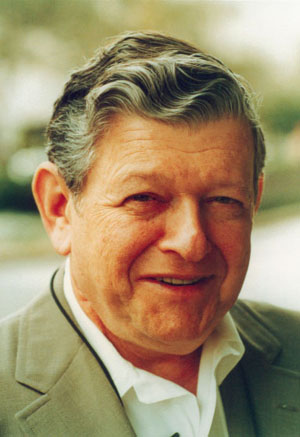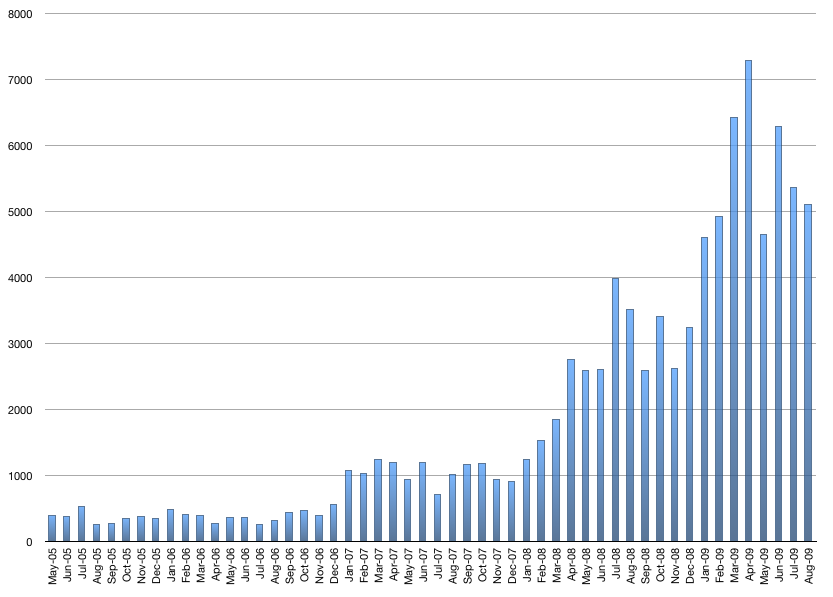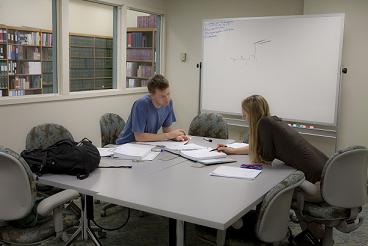Measuring impact: prove your worth!
- Details
- Written by: Suzy Burrows
- Parent Category: Calder Communications Blog
- Category: Tips for Researchers
- Hits: 116239
Do you know your h-index? Your personal impact factor? In recent years, a variety of indices have appeared that attempt to rank researchers’ impact on their fields, and databases have begun automatically calculating some of these indices for rapid retrieval. No one index is perfect, but they are increasingly used to rank individuals and institutions.
Following are a brief description of the various indices used to rate researchers, information on the databases that can be searched or formulae used to calculate indices for individual investigators and reported shortcomings of the indices.
- Aggregate Citation Count – The total number of times an individual is cited is useful in comparing and ranking the impact of an investigator’s research within a specific discipline or institution. Author searches in the Scopus database rapidly retrieve the aggregate citation counts for a researcher and display them in on the Citation Tracker screen.
- h-Index – The Hirsh Index attempts to reflect productivity (number of papers) and impact (number of citations) in one number. It is a researcher’s lowest number of papers with the same number of citations. For example, if 77 papers were each cited at least 77 times, the h-index is 77. However, if 2 of the 77 papers were only cited twice each, the h-index is 2. Scopus automatically calculates the h-index and displays it on the Citation Tracker screen for each author searched. The h-index discounts the disproportionate weight in the aggregate citation count of highly cited papers or papers that have not yet been cited.
- A flaw of the h-index may be its inherent size dependence, in which larger numbers of publications generally command higher h-indexes. The h-index therefore rewards authors who publish many modestly well-cited articles, and punishes authors who publish profligately or rarely, new authors with few citation and authors who publish important papers judiciously. Like other measures, the h-index depends on the publication time period and subject discipline.
Tough Times: how the Library is helping you
- Details
- Parent Category: Calder Communications Blog
- Category: Come to the Library!
- Hits: 100756
Free is always good news! The Calder Library is very pleased to announce that the fees for interlibrary loan and full service photocopy requests continue to be dropped. There are no longer fees for:
- Requesting items unavailable in Calder’s collections from other libraries throughout the nation.
- Delivering photocopies of items in the Library’s print collections that are not available electronically.
The form to request either of these services is readily available at https://www.library.miami.edu/calder/index.html. It is also accessible on the Library’s web site, on the ‘Forms’ link on the horizontal bar near the top.
In addition, there is a new Free Scan-to-Email Option on all public multifunction printers in the library. Instead of printing copies at the library, you now have the convenient option to scan articles and book pages and email them directly to yourself. Not only is it green, it’s also cheaper!
Weiss Gift
- Details
- Written by: Suzy Burrows
- Parent Category: Calder Communications Blog
- Category: New Resources Announcements
- Hits: 145444
 The Library is pleased to announce a gift of books that belonged to Jess B. Weiss, M.D., inventor of the modern epidural needle. Dr. Weiss was a department chair at Harvard’s Brigham and Women’s Hospital in Boston for many years, and served as an Admiral in the U.S. Navy. He received lifetime achievement awards from both the American Society of Anesthesiology and the American College of Obstetrics and Gynecology. Dr. Weiss was a gifted and dedicated physician who served as a mentor to many individuals. He was also a humanitarian and an early advocate for women physicians and the underserved. Mrs. Shirley Weiss decided to donate the books to Calder after reading an article about the Library in Miami Medicine in her doctor’s office.
The Library is pleased to announce a gift of books that belonged to Jess B. Weiss, M.D., inventor of the modern epidural needle. Dr. Weiss was a department chair at Harvard’s Brigham and Women’s Hospital in Boston for many years, and served as an Admiral in the U.S. Navy. He received lifetime achievement awards from both the American Society of Anesthesiology and the American College of Obstetrics and Gynecology. Dr. Weiss was a gifted and dedicated physician who served as a mentor to many individuals. He was also a humanitarian and an early advocate for women physicians and the underserved. Mrs. Shirley Weiss decided to donate the books to Calder after reading an article about the Library in Miami Medicine in her doctor’s office.
NIH Public Access
- Details
- Written by: Suzy Burrows
- Parent Category: Calder Communications Blog
- Category: Tips for Researchers
- Hits: 100931
In January, 2008 the National Institutes of Health (NIH) announced a revision to its Public Access Policy that went into effect April 7, 2008, and on March 11, 2009, President Obama signed a law making the revision permanent. The revision requires researchers to deposit copies of the final manuscripts of peer-reviewed journal articles, resulting from research supported in whole or in part from NIH, to the National Institutes of Health Manuscript Submission (NIHMS) system. The effect of the revision on the number of manuscripts, submitted to NIHMS for public availability in PubMed Central within 12 months of publication, is seen in the chart below.

New Faces @ Calder
- Details
- Written by: Suzy Burrows
- Parent Category: Calder Communications Blog
- Category: Who's Who at Calder: Staff Updates
- Hits: 104007
 Brenda M. Linares joined the Calder Library on August 31, 2009, as Manager, Finance and Administrative Librarian in Medical Library Administration. Ms. Linares was awarded a BS in Finance from the California State University-Northridge and a Masters in Library and Information Science from the University of California, Los Angeles in 2007. Prior to library school, Ms. Linares worked for several years in the financial sector. Following library school, she was accepted as a Fellow in the prestigious and highly competitive National Library of Medicine (NLM) Associate Fellowship Program. The first year of this two-year fellowship is spent at NLM. Ms. Linares then selected the Calder Library to spend her second year in Medical Library Administration. In addition to her financial responsibilities, Ms. Linares will continue to participate in the Library’s outreach activities.
Brenda M. Linares joined the Calder Library on August 31, 2009, as Manager, Finance and Administrative Librarian in Medical Library Administration. Ms. Linares was awarded a BS in Finance from the California State University-Northridge and a Masters in Library and Information Science from the University of California, Los Angeles in 2007. Prior to library school, Ms. Linares worked for several years in the financial sector. Following library school, she was accepted as a Fellow in the prestigious and highly competitive National Library of Medicine (NLM) Associate Fellowship Program. The first year of this two-year fellowship is spent at NLM. Ms. Linares then selected the Calder Library to spend her second year in Medical Library Administration. In addition to her financial responsibilities, Ms. Linares will continue to participate in the Library’s outreach activities.
 Emily J. Vardell joined the Calder Library on September 1, 2009, as Community Engagement Librarian and Collections Liaison. Ms. Vardell received a BA from Wellesley College with majors in Biological Chemistry and German Studies and a Master of Library Science from Texas Woman’s University in 2007. Prior to her library degree, Ms. Vardell did graduate level coursework at the University of Vienna as a Fulbright Scholar. Following her library degree, she was accepted into the NLM Associates Fellowship Program. She spent her second year of the fellowship at the Health Sciences Library at the University of North Carolina, Chapel Hill where she worked with on the university’s global health initiatives and with North Carolina public health practitioners and students. In her new position, she will be involved in the library's outreach activities and collection development.
Emily J. Vardell joined the Calder Library on September 1, 2009, as Community Engagement Librarian and Collections Liaison. Ms. Vardell received a BA from Wellesley College with majors in Biological Chemistry and German Studies and a Master of Library Science from Texas Woman’s University in 2007. Prior to her library degree, Ms. Vardell did graduate level coursework at the University of Vienna as a Fulbright Scholar. Following her library degree, she was accepted into the NLM Associates Fellowship Program. She spent her second year of the fellowship at the Health Sciences Library at the University of North Carolina, Chapel Hill where she worked with on the university’s global health initiatives and with North Carolina public health practitioners and students. In her new position, she will be involved in the library's outreach activities and collection development.
Faculty News
- Details
- Parent Category: Calder Communications Blog
- Category: Who's Who at Calder: Staff Updates
- Hits: 104449
Mary Moore is the first author of an article: Web usability with a Hispanic medically underserved population, Journal of the Medical Library Association 2009 97(2):114-21 Apr. http://www.ncbi.nlm.nih.gov/pmc/articles/PMC2670225/pdf/mlab-97-02-114.pdf
Together with L. Jared Abramson, Suzetta Burrows and Yanira Garcia-Barcena, and Dr. Moore presented a poster: Fostering Researcher Collaboration and Mentoring at the Annual Meeting of the Medical Library Association, May 17, 2009. http://www.posterexperience.com/poster.php?id=34
Tanya Feddern-Bekcan and Joaquin E. Arriaga presented a poster: Benefits and Perquisites Attracting and Retaining Valuable Librarians at the Annual MLA Meeting, May 18, 2009. http://www.posterexperience.com/poster.php?id=96
Feddern-Bekcan published a review of Google Calendar in Journal of the Medical Library Association 2008 96(4):394-5 Oct. and published a Member Spotlight on her professional duties, activities and goals in MLA News 2009 no. 419:12-13 Apr. http://www.ncbi.nlm.nih.gov/pmc/articles/PMC2568829/pdf/mlab-96-04-394.pdf
Yanira Garcia-Barcena and Vedana Vaidhyanathan presented a poster: Filters to Support Animal Methodologies Used in Animal Research at the Annual MLA Meeting, May 17, 2009. http://www.posterexperience.com/poster.php?id=67
Brenda Linares, Yanira Garcia-Barcena, Suzetta Burrows and Mary Moore presented a poster: Fusion of Librarians and DOCS for Health at the Annual MLA Meeting, May 19, 2009. http://www.posterexperience.com/poster.php?id=122
Emily Vardell presented a poster: Selective Sampling of the National Library of Medicine’s Coverage of Disaster-related Gray Literature on the Web at the Annual MLA Meeting, May 18, 2009. http://www.posterexperience.com/poster.php?id=8
Vardell also presented a poster: Surveying the Global Health Efforts of Health Sciences Libraries at the Mid Atlantic Chapter of the Medical Library Association Meeting, October 6, 2009. http://3bythesea.pbworks.com/f/UNC+HSL+Global+Health+Survey+Poster.pdf
Group Study Rooms, Public Computers, and a Computer Lab
- Details
- Parent Category: Calder Communications Blog
- Category: Come to the Library!
- Hits: 105120
New Small Group Study Rooms on the South and West walls of the first floor. University of Miami Miller students are accorded priority access to all seven small group classrooms in the Library: three on the first floor, two on the West wall of the second floor, and two on the lower level.


New Public Computers - There are now 33 new networked public access computers on the first floor. 23 computers require users to login with their MIT (Outlook) usernames and passwords. 10 computers on the west and south walls continue to be open access.
There are also 5 new wireless access computers on the first floor and 9 on the second floor that can be accessed as “guest” or with a MIT (Outlook) username and password. “Guest” access is severely limited and does not include access to the Library’s purchased electronic resources.
All 47 computers have software that logs users off after 30 minutes of inactivity. Users are encouraged to save their personal work on their personal flash drives to minimize any loss of work due to inactivity.
Computer Lab for Students – A card access system was installed in the e-classroom on the third floor of the Library for use by medical students when the room is not in use for classes. The classroom has 20 workstations and one instructor workstation.
Page 17 of 17